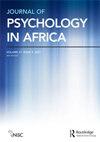利比里亚和毛里求斯学校青少年当前酒精、大麻和烟草合并症的患病率和预测因素
IF 0.8
4区 心理学
Q3 PSYCHOLOGY, MULTIDISCIPLINARY
引用次数: 0
摘要
摘要本研究旨在估计利比里亚和毛里求斯学校青少年目前共病酒精、大麻和烟草的使用情况。分析了利比里亚和毛里求斯2017年全国和横断面学校健康调查的二级数据,该调查抽样了4934名青少年(中位年龄17岁)。五分之一的学生(20.6%)报告目前使用一种物质,6.2%报告目前使用两种物质,3.8%报告目前使用三种物质。近十分之一(7.8%)的学生报告目前使用酒精和烟草,4.6%的学生报告目前使用酒精和大麻,5.2%的学生报告目前使用大麻和烟草。男性、年龄较大、父母吸烟、被动吸烟、心理困扰、软饮料摄入、逃学和父母支持不足与较高程度的共病物质相关。十分之一的学生目前有两到三种类型的物质使用,并确定了几个相关因素。针对青少年共病性物质使用的干预措施应优先考虑已确定的相关因素。关键词:共病物质使用青少年;脑膜炎;麻疹;危险因素;GSHS得到了世界卫生组织和美国疾病控制和预防中心的支持。补充资料补充资料可在以下网址获得:https://doi.org/10.1080/14330237.2023.2255452本文章由计算机程序翻译,如有差异,请以英文原文为准。
Prevalence and predictors of comorbid current alcohol, cannabis, and tobacco use among school adolescents in Liberia and Mauritius
AbstractThis study aimed to provide estimates on current comorbid alcohol, cannabis, and tobacco use among school adolescents in Liberia and Mauritius. Secondary data were analysed from the 2017 national and cross-sectional school health surveys in Liberia and Mauritius which sampled 4 934 adolescents (median age 17 years). One in five students (20.6%) reported one type of current substance use, 6.2% two types of current substance use, and 3.8% three types of current substance use. Almost one in 10 (7.8%) students reported current alcohol and tobacco use, 4.6% current alcohol and cannabis use, and 5.2% current cannabis and tobacco use. Male sex, older age, parental tobacco use, passive smoking, psychological distress, soft drink intake, school truancy and low parental support were associated with a higher degree of comorbid substance. One in 10 students engaged in two or three types of current substance use, and several associated factors were identified. Interventions targeting comorbid substance use among adolescents should prioritise identified associated factors.Keywords: comorbid substance useadolescentsLiberiaMauritiusrisk factorsprotective factors AcknowledgementsThis paper uses data from the Global School-Based Student Health Survey (GSHS). GSHS is supported by the WHO and the US Centers for Disease Control and Prevention.Supplementary materialSupplementary material is available online at: https://doi.org/10.1080/14330237.2023.2255452
求助全文
通过发布文献求助,成功后即可免费获取论文全文。
去求助
来源期刊

Journal of Psychology in Africa
PSYCHOLOGY, MULTIDISCIPLINARY-
CiteScore
1.70
自引率
16.70%
发文量
62
期刊介绍:
Findings from psychological research in Africa and related regions needs a forum for better dissemination and utilisation in the context of development. Special emphasis is placed on the consideration of African, African-American, Asian, Caribbean, and Hispanic-Latino realities and problems. Contributions should attempt a synthesis of emic and etic methodologies and applications. The Journal of Psychology in Africa includes original articles, review articles, book reviews, commentaries, special issues, case analyses, reports and announcements.
 求助内容:
求助内容: 应助结果提醒方式:
应助结果提醒方式:


